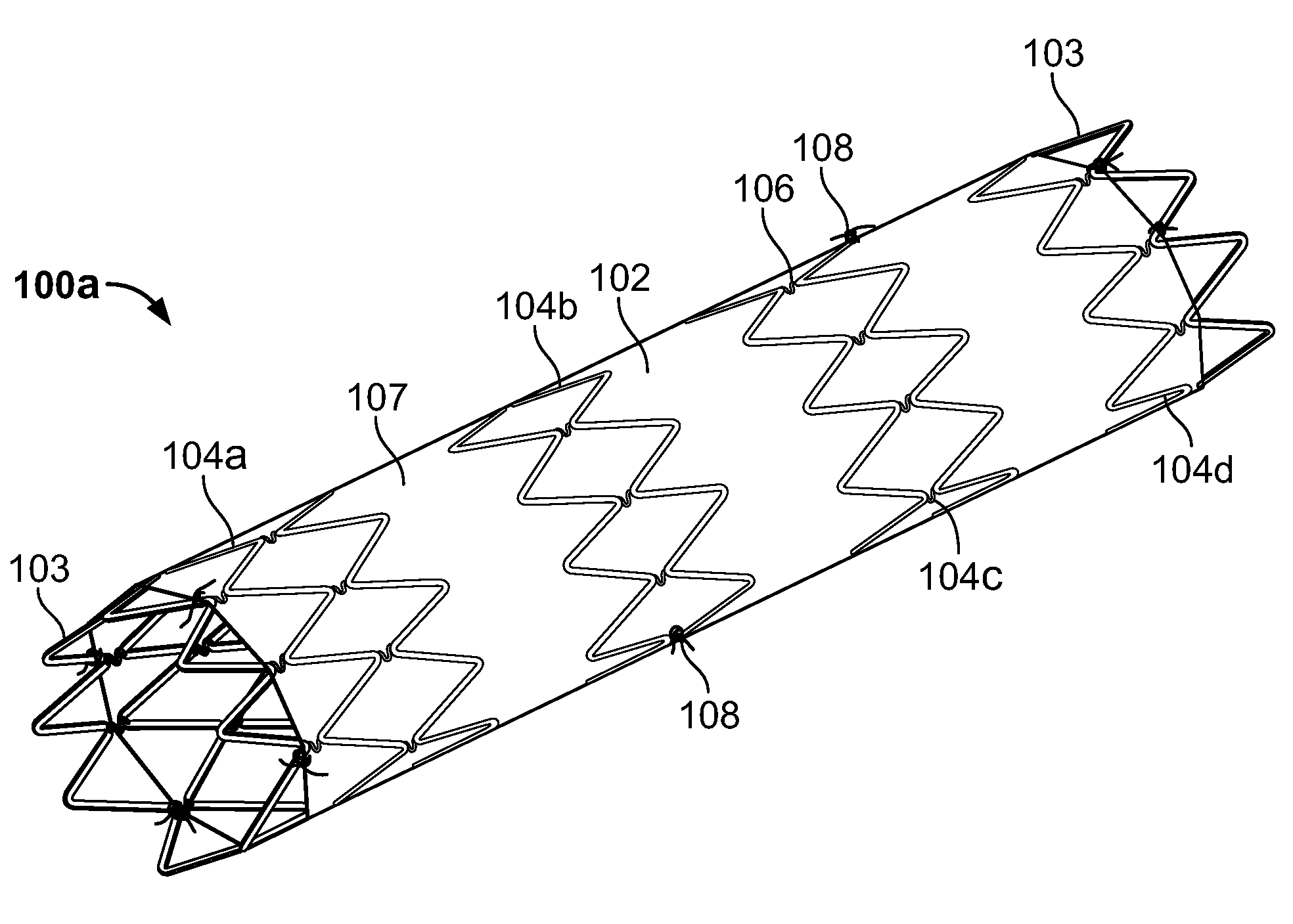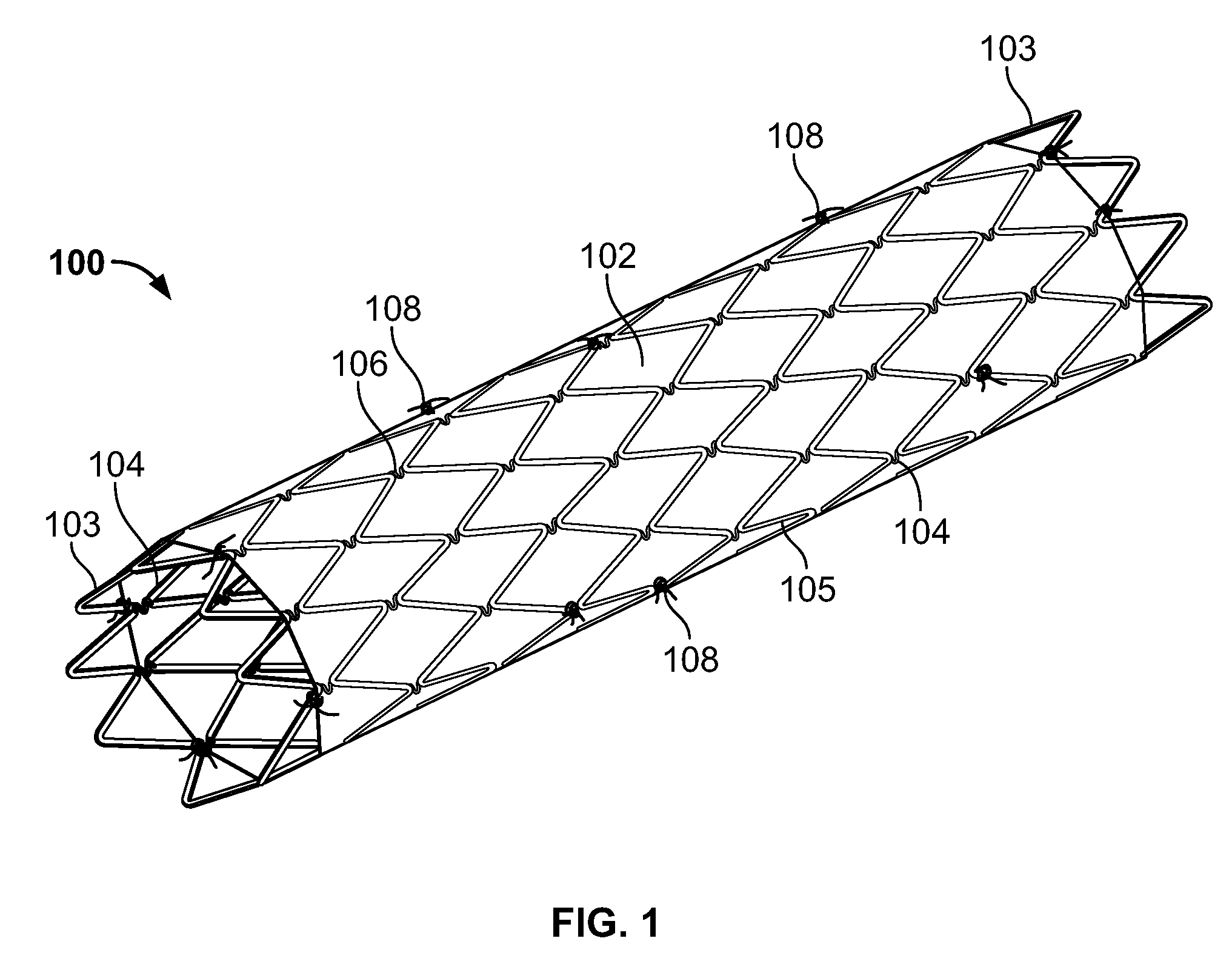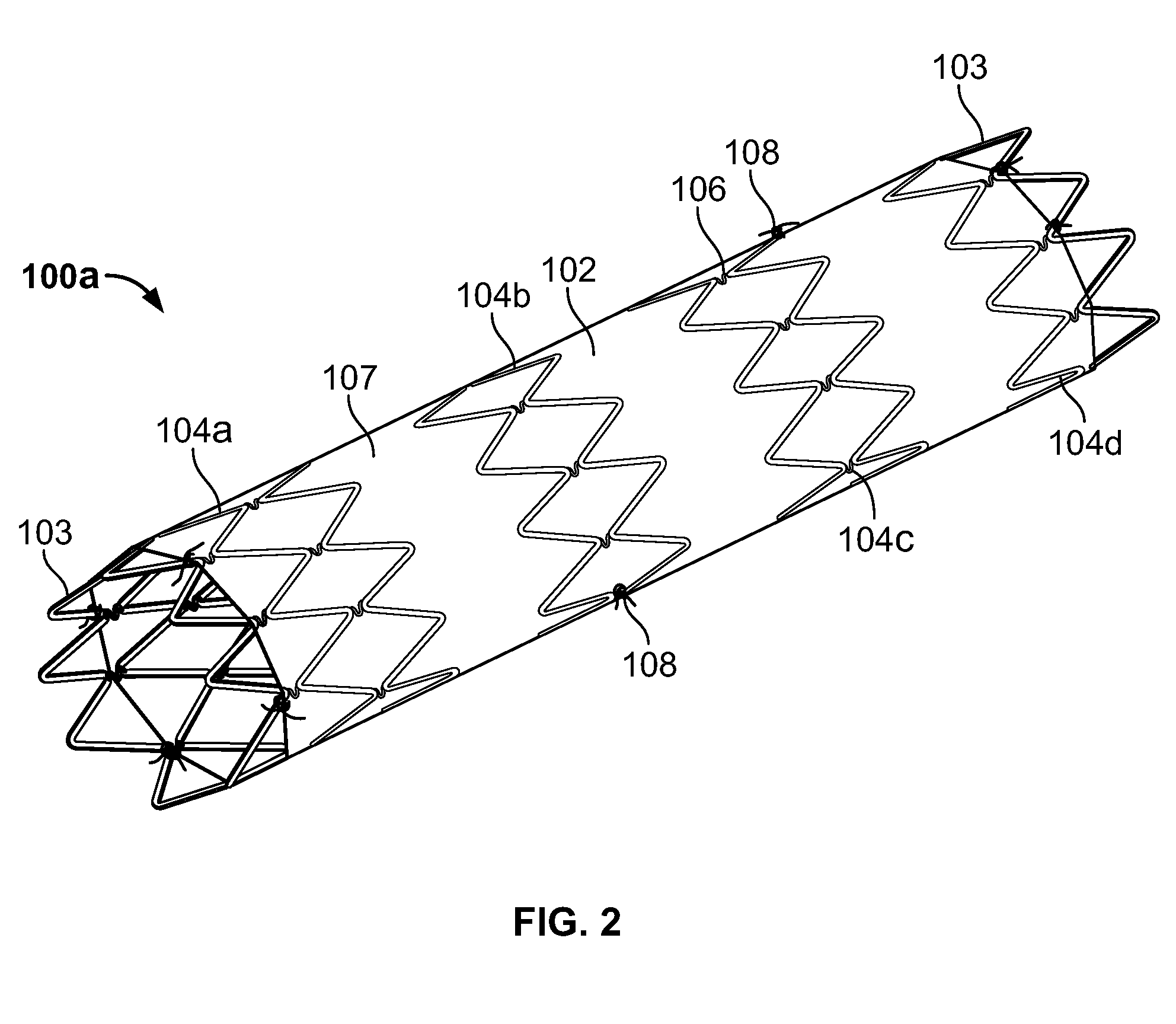Biodegradable stent graft
a biodegradable, stent technology, applied in the field of tissue reconstruction, can solve the problems of weakened ability to dilate and constrict the wall of the vessel, damage to the vessel wall, and affecting the healing effect of the stent,
- Summary
- Abstract
- Description
- Claims
- Application Information
AI Technical Summary
Problems solved by technology
Method used
Image
Examples
first embodiment
[0023]In a first embodiment, the outer surface of the sheet 102 is adhesive free and the vessel wall will grow into it aided by the force applied to it from the frame 104 once deployed. The sheet 102, and more specifically the outer surface of the sheet 102, may include seeding cells (not shown) coupled to it. The seeding cells may be endothelial cells or stem cells from the patient or a matching donor. The seeding cells help promote cell ingrowth from the inner vessel wall to the sheet 102.
third embodiment
[0024]The sheet 102 is attached to the frame 104 in any desirable manner. In a first arrangement, the sheet 102 is sewn to the frame 104 at selected points along the length and circumference of the frame 104 based on the design of the frame 104. Element 108 depicts sewing points 108 between the sheet 102 and the frame 104. Alternatively, or in addition, the sheet 102 may be joined to the frame 104 by suitable body-compatible adhesives such as fibrin glue. In a third embodiment, not shown, the stent graft has a sheet inside the frame in addition to the outer sheet 102. The inner and outer sheets are compressed or are heat sealed with the frame 104 therebetween.
[0025]FIG. 2 depicts an alternative embodiment to FIG. 1. More specifically, the embodiment of FIG. 2 differs from that of FIG. 1, in that the frame is not a unitary element. Rather, the frame is constructed of at least two longitudinally spaced independent frame sections. In the depicted embodiment of FIG. 2, the frame is form...
PUM
| Property | Measurement | Unit |
|---|---|---|
| time | aaaaa | aaaaa |
| time | aaaaa | aaaaa |
| time | aaaaa | aaaaa |
Abstract
Description
Claims
Application Information
 Login to View More
Login to View More - R&D
- Intellectual Property
- Life Sciences
- Materials
- Tech Scout
- Unparalleled Data Quality
- Higher Quality Content
- 60% Fewer Hallucinations
Browse by: Latest US Patents, China's latest patents, Technical Efficacy Thesaurus, Application Domain, Technology Topic, Popular Technical Reports.
© 2025 PatSnap. All rights reserved.Legal|Privacy policy|Modern Slavery Act Transparency Statement|Sitemap|About US| Contact US: help@patsnap.com



